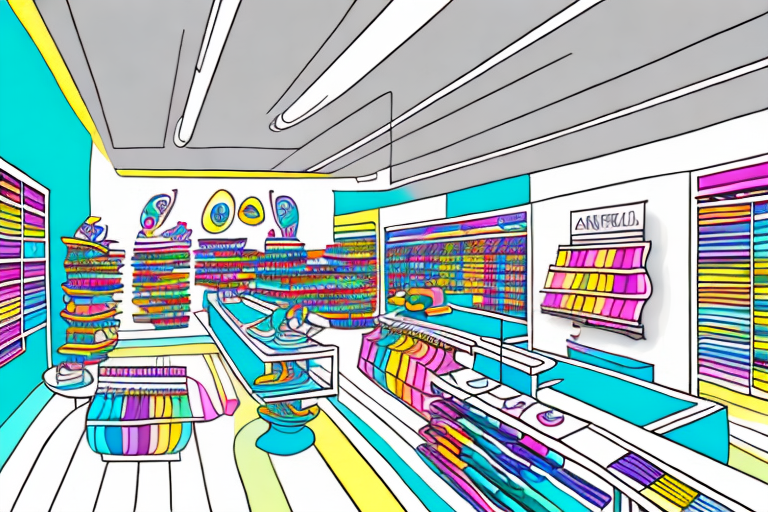Customizing Your Store Design and Branding for Maximum Impact
In today's competitive e-commerce landscape, having a strong and well-defined brand identity is more important than ever. Your online store's design and branding can be the difference between standing out from the crowd and blending in with the competition. In this article, we will explore the critical role that store design and branding play in e-commerce success, as well as provide actionable tips for optimizing your online store for maximum impact.
Importance of Store Design and Branding for E-commerce Success
Your store's design and branding are critical components of your overall e-commerce strategy. A compelling brand identity helps differentiate your store from competitors, while a visually appealing design encourages visitors to stay on your site longer and can increase the likelihood of conversion. According to a Forbes study, businesses with strong branding see a 23% increase in revenue compared to those with weak branding.
Additionally, a well-designed store can improve the user experience for your customers. A clear and intuitive layout makes it easier for customers to find what they're looking for, reducing frustration and increasing the chances of a successful purchase. A visually appealing design also creates a positive emotional connection with your brand, leading to increased customer satisfaction and repeat business. Therefore, investing in store design and branding is not only important for attracting new customers but also for retaining existing ones and building a positive reputation for your brand.
Developing Your Brand Identity
Conducting a Brand Audit
Before customizing your store's design and branding, it's essential to conduct a brand audit. This involves evaluating your current brand identity, messaging, and visual elements to identify areas for improvement. Consider questions such as:
- How well does your current brand identity align with your overall business goals?
- Is your messaging consistent across all channels, including social media and email?
- Do your visual elements, such as your logo and color palette, accurately reflect your brand voice?
By conducting a thorough brand audit, you can identify areas for improvement and ensure that your brand effectively communicates your business's unique value proposition.
Another critical aspect of a brand audit is understanding your target audience. Are you effectively reaching and resonating with your intended demographic? Analyze your customer data and feedback to determine if your brand messaging and visual elements appeal to your target audience. Additionally, stay updated with industry trends that may require shifts in your branding strategy. Regular brand audits ensure that your online store's branding remains relevant and effective.
Choosing the Right Color Palette
Your color palette is one of the most critical elements of your brand identity. Color choice affects how people perceive your brand and can influence consumer behavior. For instance, red often conveys urgency or excitement, while blue can signify trustworthiness and dependability. When selecting a color palette for your brand, consider your industry, target audience, and overall brand messaging. Choose colors that accurately reflect your brand voice while appealing to your target market.
The Importance of Typography
In addition to your color palette, selecting the right typography significantly impacts your store's design. Your typography should be legible, easy to read, and consistent across all pages. Avoid using too many different font styles, as this can confuse visitors and detract from the overall user experience. When selecting typography, align it with your brand voice and visual elements to ensure it accurately reflects your brand identity.
Another critical aspect of typography is the hierarchy of information. Use different font sizes, weights, and styles to differentiate between headings, subheadings, and body text. This guides the user's eye and makes navigation through your website more intuitive.
Accessibility is also vital. Choose fonts that are easy to read for individuals with visual impairments or dyslexia. Improve accessibility by ensuring sufficient contrast between your text and background colors.
Creating a Memorable Logo
Your logo is often the first thing customers associate with your brand. It's essential to create a logo that accurately reflects your brand identity and sets you apart from the competition. When designing your logo, consider your color palette, typography, and overall brand messaging. Your logo should be visually appealing, easily recognizable, and embody your brand values.
Versatility is another crucial factor in logo design. Your logo should adapt seamlessly to different mediums and sizes, such as social media profiles, business cards, and billboards. It should also work effectively in both color and black-and-white formats. A versatile logo ensures consistent and recognizable branding across all platforms and mediums.
Maintaining a Consistent Brand Voice
Having a consistent brand voice across all marketing channels is essential for building brand recognition and trust. Consistency ensures that your messaging effectively communicates your brand values and unique selling proposition. Here are some tips for creating a consistent brand voice:
- Develop a brand style guide that outlines your brand mission, values, and voice.
- Use a consistent tone and messaging across all marketing channels, including social media, email, and website copy.
- Avoid using jargon or language that may confuse or alienate customers.
Enhancing User Experience Through Store Design
Effective store design goes beyond aesthetics; it's about creating a positive user experience. A well-designed storefront can increase conversion rates and foster brand loyalty. Here are some tips for enhancing user experience through store design:
- Ensure your site is easy to navigate with clear menus and categories.
- Optimize your site for mobile users accessing it via phones or tablets.
- Use high-quality images and detailed product descriptions to showcase your products accurately.
Designing a Mobile-Optimized Storefront
With over 54% of global web traffic coming from mobile devices (Statista), optimizing your store for mobile is essential. Ensure your site is easily navigable on small screens and that your checkout process is mobile-friendly. A mobile-optimized storefront can significantly increase user engagement and drive conversions.
Key aspects of mobile optimization include:
- Fast Loading Times: Slow-loading websites can lead to high bounce rates. Optimize your website's speed by compressing images, minimizing code, and using a content delivery network (CDN).
- Responsive Design: Implement responsive design to ensure your website adapts to different screen sizes and orientations, providing the best possible user experience.
Creating Effective Product Pages
Your product pages are often the final step before customers make a purchase. Optimizing these pages can be the difference between a successful sale and a lost opportunity. Here are some tips for creating effective product pages:
- Use high-quality images that accurately depict your products from multiple angles.
- Provide detailed product descriptions that highlight features and benefits relevant to your target audience.
- Incorporate customer reviews and ratings to build credibility and trust.
Additionally, ensure that your product pages are mobile-friendly. With the increasing number of shoppers using smartphones, responsive design and easily clickable buttons are crucial for maintaining engagement and facilitating conversions.
Maximizing Conversions with Effective Calls-to-Action
Calls-to-action (CTAs) are pivotal in driving conversions and guiding customers through their purchasing journey. Effective CTAs should be clear, concise, and strategically placed. Consider the following tips for creating impactful CTAs:
- Use action-oriented language that motivates users to take the next step.
- Place CTAs above the fold and in prominent locations throughout your website to ensure visibility.
- Conduct A/B testing on different CTAs to identify which versions yield the highest conversion rates.
Creating a Seamless Checkout Process
A streamlined checkout process can significantly reduce cart abandonment rates. According to the Baymard Institute, the average cart abandonment rate is around 69.57%. To minimize this, consider the following tips:
- Minimize the number of steps required to complete a purchase to reduce friction.
- Offer multiple payment options to accommodate different user preferences.
- Ensure that your checkout process is mobile-optimized and accessible on all devices.
By simplifying the checkout process, you can enhance the user experience and increase the likelihood of completing sales.
Building Trust and Credibility
Using Social Proof
Social proof, such as customer reviews and ratings, is a powerful tool for building trust and encouraging sales. Including customer testimonials, star ratings, and social media mentions can enhance credibility and promote brand loyalty. According to BrightLocal's Consumer Review Survey, 91% of consumers read online reviews, with 84% trusting online reviews as much as personal recommendations.
Incorporating Customer Feedback
Listening to customer feedback helps identify areas for improvement and keeps you ahead of the competition. Incorporating feedback into your design and branding strategy ensures that your store meets the needs of your target audience. Consider using surveys, feedback forms, and direct interactions to gather insights on your design, messaging, and overall user experience. Continuous improvement based on customer feedback can lead to higher satisfaction and increased sales.
Measuring and Improving Store Performance
Tracking and Analyzing Store Metrics
Tracking and analyzing store metrics is essential for identifying areas for improvement and driving future success. Key metrics to monitor include website traffic, conversion rates, and average order value. Utilizing analytics tools like Google Analytics can provide valuable insights into user behavior and website performance.
By analyzing these metrics, you can make data-driven decisions about your design and branding strategies, optimizing them to better meet your business goals and customer needs.
Conclusion
Customizing your store design and branding for maximum impact is a crucial component of your overall e-commerce strategy. By creating a compelling brand identity and visually appealing storefront, you can attract more customers and drive sales. Implement the tips outlined in this article to audit your brand identity, optimize your store design, and incorporate customer feedback for continuous improvement.




















